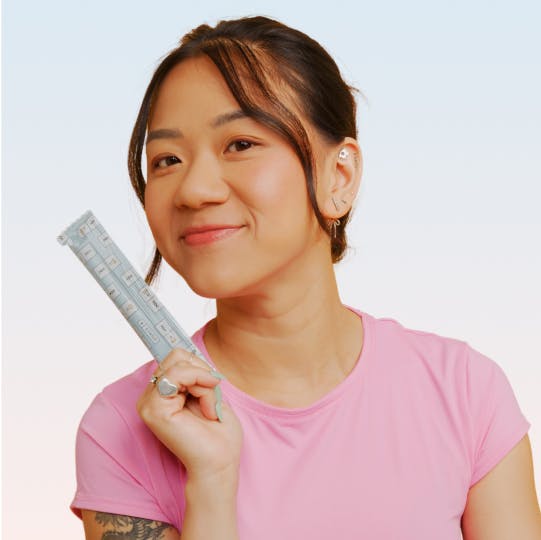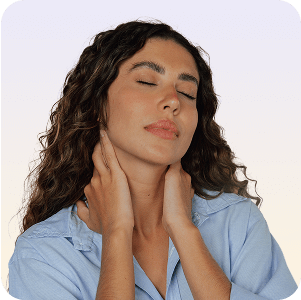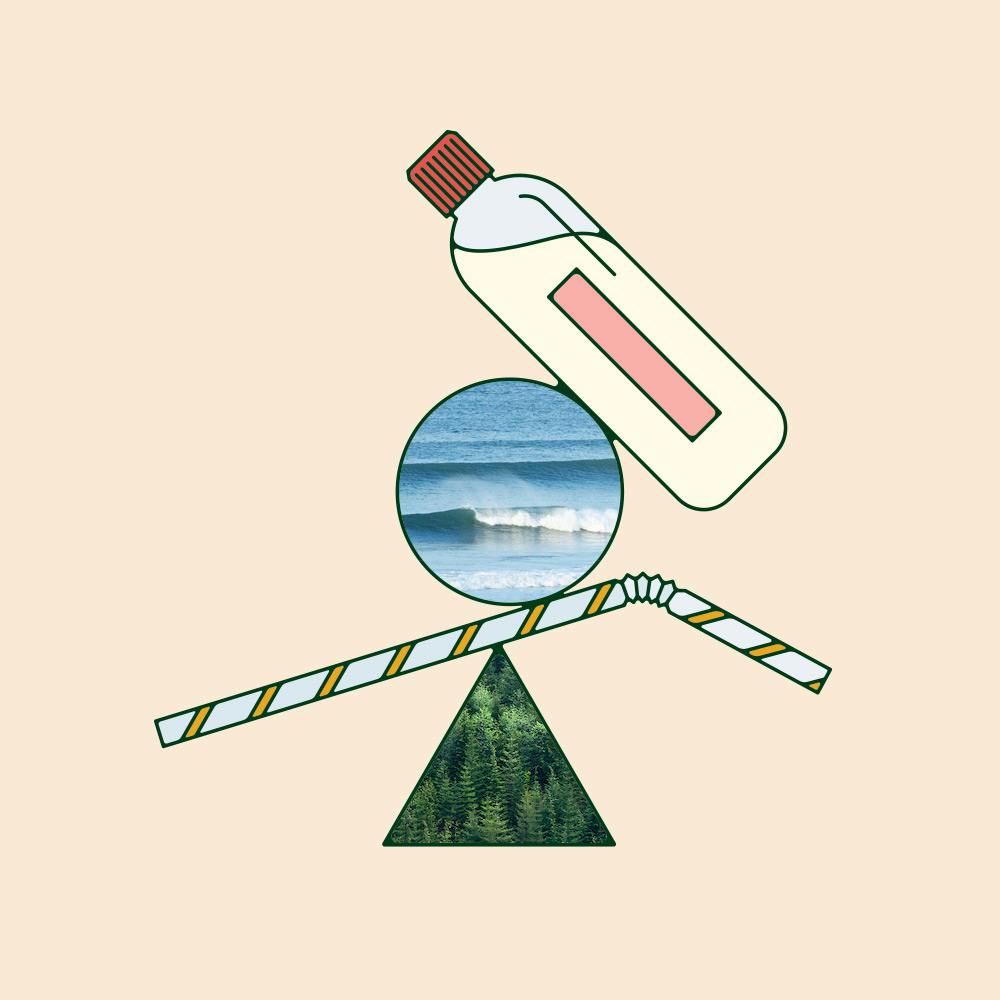Written by Liv Cassano
Illustrated by Erin Rommel
Nowadays we’re becoming more aware of the environmental impact our daily lives (and carbon footprint) have on the planet, trying to build more sustainable habits. While it’s an admirable (and necessary) endeavour, it’s also a confusing one. Terms like “organic” and “biodegradable” are thrown around a lot, but how many of us know exactly what they mean?
Knowing what impact you’re having on the environment is key to living sustainably, and the devil’s in the details. In order to really make a difference, reduce waste and help our ecosystem, it’s important to learn about the terms used to define sustainability. We put together the ultimate glossary of environmental terms to help you navigate the murky waters of eco-friendly products and packaging.
Biodegradable
“Biodegradable” is probably the most used—and simultaneously the most vague—label. If something is biodegradable, that means it can break down in natural elements (the prefix “bio” indicates that a product will degrade through a biological process). What’s left is carbon dioxide, water and biomass.
Sounds eco-friendly, no? But there are a few caveats. First of all, any product will eventually break down, whether it’s wood or plastic, even if it takes 10,000 years. Since the definition of biodegradable doesn’t include a time limit (it’s assumed that it takes less than 1,000 years), many of us assume a biodegradable material causes no harm to the environment, and companies often exploit this vague definition.
The time it takes for something to decompose also depends heavily on the decomposing conditions. Most waste ends up in landfills, where there isn’t enough light, water, oxygen and bacteria to move the process along. As waste decomposes in landfills it releases methane, a greenhouse gas 20 times worse for global warming than carbon dioxide. That being said, biodegradable materials are still a better option than plastic-based ones—that’s why Daye tampons and packaging are all biodegradable. We just believe in being 100% transparent of the term’s limitations.
Organic
The organic label is given to any product or material which was grown and processed without the use of any synthetic pesticides, fertilisers, or GMO. Organic animal products like meat, dairy and eggs also usually mean the animals were not given antibiotics or growth hormones. So organic is a fancy way of saying “natural”, but for a product to be labelled as organic it needs to be certified.
The Soil Association, which is the UK’s largest organic certification body, defines organic as “higher levels of animal welfare, lower levels of pesticides, no manufactured herbicides or artificial fertilisers and more environmentally sustainable management of the land and natural environment, which means more wildlife.”
Daye tampons are made from organic, sustainably-sourced cotton that is grown without the use of pesticides and herbicides—because who wants that in their vagina?
Compostable
Compostable and biodegradable are often used interchangeably, because both are meant to return to the earth safely. All compostable materials are biodegradable, but not the other way round. The main difference is that compostable materials take it up a notch and not only do they not damage soil composition, they also provide it with nutrients once they’ve broken down. It’s like the ultimate give-back scheme. Unlike other biodegradable materials, compostables also break down after a defined amount of time (12 weeks).
For compostable materials to properly break down they have to be added to compost heaps, which require specific conditions dependent on sunlight and drainage. Although it’s possible to DIY this, home compost difficulty reaches the temperature needed to break down a lot of compostable materials, so it’s best to trash them in your food waste bin so they can be industrially composted. But before doing so, check that your local council has composting facilities available!
So while biodegradable materials can break down in landfills, compostable materials prefer special composting conditions in order to break down faster. This is because when compostable waste ends up in a landfill, it needs moisture, oxygen and bacteria to biodegrade. If it’s not exposed to those conditions, it’ll stay in the landfill for a longer amount of time.
So compostable materials are slightly more high-maintenance, but ultimately worth the extra effort. Fun fact: Daye tampons are compostable, even when soiled with menstrual blood! And so are our paper mailers and pouches.
Recyclable
Simply put, a recyclable product can be broken down into its raw and repurposed for further use. In an ideal world this would be great, but material composition is a big complication in how recyclable something is. With the many different types and variants of plastics used, and the difficulty in accurately sorting all of them, plastics often get “downcyled” in to a lower grade product.
Furthermore, with a lot of packaging, different materials are layered and glued on top of each other, which is why a lot of plastic packaging isn't fully recyclable.
So “recyclable” is another term that sounds 100% green, but how recyclable something really is comes down to us, and whether we make an effort to recycle it. 80% of the rubbish we throw away can be recycled, so it’s up to consumers to read the label and dispose of it correctly, which once again depends on your local council. We strive to make our packaging as sustainable as possible, so our initiation boxes are both recycled and recyclable.
Natural Fibres
Natural fibres are substances produced by plants and animals, that can be spun into filaments, thread or rope and be woven, knitted, or bound. Cotton, hemp, silk and wool are the most common.
The best thing about natural fibres is that they’re renewable sources, meaning that they can be replenished or harvested again and again without depleting or damaging the environment. Hemp, for example, only requires rainwater and sunlight to grow. It’s basically the ultimate low-maintenance plant.
Daye tampons only uses natural cotton fibres because they’re a much greener alternative to synthetic fibres (such as petroleum-derived ones), which aren’t biodegradable and contribute to microplastic pollution, and non-organic cotton, which requires toxic pesticides and herbicides to grow *thumbs down*.
Water-soluble
Water-soluble materials are at the forefront of sustainable innovation. By dissolving almost immediately in water, nothing ends up in landfills, no greenhouse gases are emitted, and no microplastic particles contribute to marine pollution. All that’s left is harmless residue consisting of water and biomass (plant or animal material) that can safely be poured down the drain.
Bio-based
Bio-based materials are wholly or partly derived from biomass, which either occurs naturally or is synthesised. Bio-based products are a sustainable option because they come from renewable resources that don't rely on oil, often require less water and energy to manufacture, and produce less toxic waste. Sugarcane is one of the most commonly used plants to make bio-based plastic, and it’s also what we use to make our sustainable tampon applicators.
TL;DR
- Material composition and landfill conditions are equally important for something to be biodegradable. Biodegradable materials also release greenhouse gases when they break down, and there is no time limit attached to the definition, so a biodegradable product could potentially stick around for 1000 years. That being said, biodegradable materials are still a better option than plastic-based ones!
- For a material to be organic, it has to be grown and processed without the use of any synthetic pesticides, fertilisers, or GMO.
- Compostable and biodegradable are often used interchangeably, but compostable materials break down within 12 weeks. They also provide the soil with nutrients once they’ve broken down.
- "Recyclable” is another term that sounds eco-friendly, but how recyclable something really is comes down to us, and whether we make an effort to recycle it. With a lot of packaging, different materials are layered and glued on top of each other, which is why a lot of plastic packaging isn't fully recyclable.






